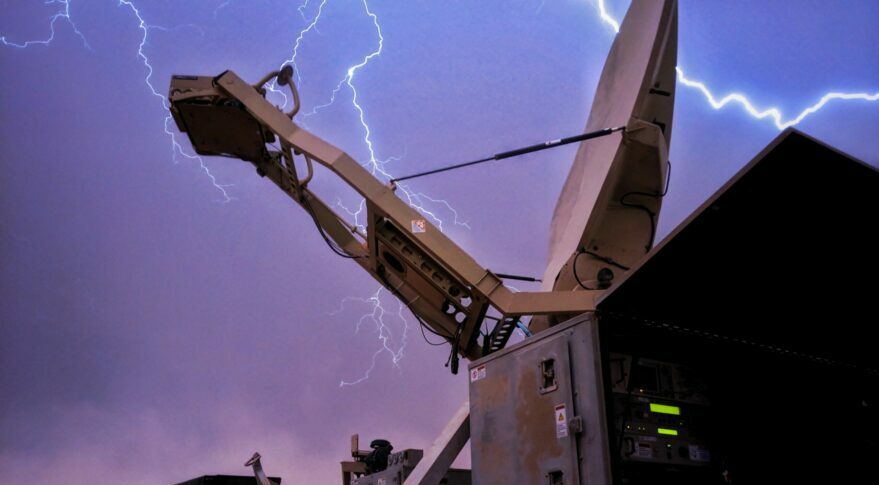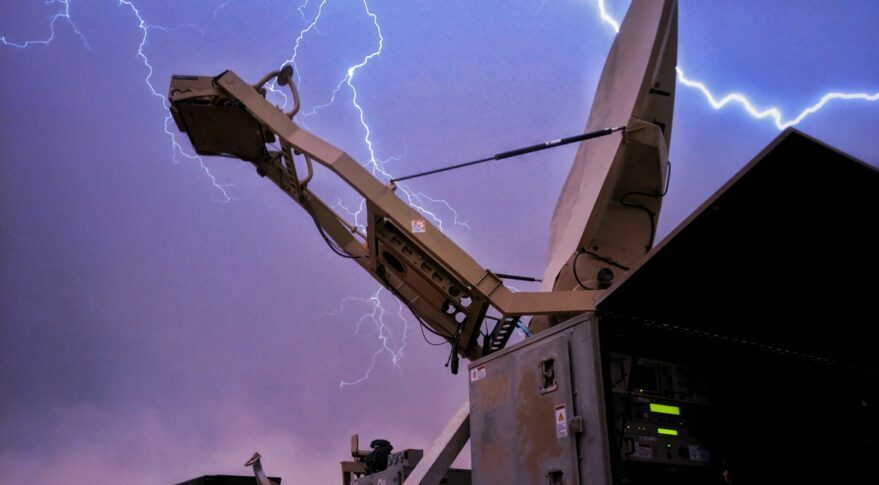
With modern life’s reliance on space-based technologies, it can be easy to forget that Operation Desert Storm, the world’s first “space war,” occurred a mere 30 years ago. While that might seem a lifetime for some, soldiers and service members of my generation — many of us still serving — remember the uncertainty that preceded the conflict. Space as an operational concept was still very much a novel idea, albeit one that ultimately proved hugely successful on the battlefield and paved the way for rapid advancements in both civilian and military technologies.
In the three decades since, the world celebrated the collapse of great power contests with the fall of the Soviet Union but saw the rise of asymmetrical threats from non-state actors across the globe. After the September 11 terrorist attacks, America endured the longest armed conflict in our nation’s history, which somewhat deprioritized space in favor of more traditional means of warfighting. Now the pendulum has swung back in the other direction, as peer and near-peer competition from Russia and China, among others, is quickly reaching peak intensity.
In recognition of this fact, U.S. Space Command, which had been shuttered in the wake of the Global War on Terror in 2002, was reestablished in August 2019, and the U.S. Space Force became the United States’ sixth armed service in December 2019. These organizations are a welcome and critically important addition to the Nation’s warfighting capabilities, but we would be remiss in taking for granted organic space-based assets already residing within the individual services. As budgets shrink and the resource environment becomes increasingly constrained, more and more often I am being asked, “why Army Space?” The topic may be complex, but the answer is simple: Army Space enables ground combat, and we must retain it to win.
So, why Army Space?
Views of how the Department of Defense conducts space operations have always been strategic in nature — but now, more than ever, we must view space operations through a tactical lens. As it stands, the Space Force rightfully focuses “up,” where satellites orbit and future capabilities will reside far beyond the thermosphere. Army Space, however, looks “down,” to the terrestrial sphere, where people live and wars have been fought for millennia. The heavens might be our final frontier, but history has shown time and again that land is the nexus of combat and often the impetus for conflict itself. As the world’s finest ground fighting force, the Army’s supremacy is inextricably tied to the space domain and the capabilities we have carefully and methodically tailored to meet maneuver commanders’ requirements.
An expeditionary Army like ours, and the one we are building for 2030/2040, requires robust, resilient, on-demand space and space-enabled effects to facilitate and win in Multi-Domain Operations. It is important to note that Army-specific missions require organic Army Space capabilities not available from other Services, which are structured to create strategic effects typically unaligned with ground maneuver commanders’ plans. In short, as the Defense Department’s largest user of space capabilities, the Army is best positioned to determine our space requirements and develop the solutions that best meet our needs.
In this context, Army Space means more than just satellites or other traditional technologies; it also includes terrestrial space and high altitude capabilities that leverage satellite data and create space-related effects that enable Army divisions and corps across the warfighting continuum. Army Space provides critical support to commanders in setting the theater, ensuring U.S., allied and partner forces freedom of maneuver and enabling a calibrated force posture—all critical components of deterrence. It also enables nonlethal, non-kinetic operations that initiate and maintain contact with adversaries, thus heightening commanders’ situational understanding of adversary activities to inform theater planning. In turn, theater planners develop convergence packages that synchronize rapid and continuous integration of capabilities in all domains to overmatch adversaries, including penetration and disintegration of integrated fires and anti-access/area-denial defenses.
Setting the theater is just one example; what the Army does every day—driving and flying thousands of miles, conducting weapons training, and communicating across geographic regions and time zones, among others—is enabled by Army Space assets. Again, no other Service intimately knows and will prioritize the requirements that allow individual Soldiers on the ground to move, shoot and communicate like the Army. Organic Army Space units that move tactically and integrate tightly with maneuver formations forward in the battlespace will ensure our forces operate with precision, range, dispersion, and synchronization today, and in the Army of 2030/2040.
What else does the Army deliver from space?
Army Space functions are vast and myriad. In addition to the above, they include space situational awareness via Forward Base Mode radars and sensors at forward-deployed locations that monitor adversary missile and satellite activity. Offensive and defensive space control operations ensure freedom of action in space and, when directed, defeat efforts to interfere with or attack U.S. or allied space systems. Army units are often the only formations in the right location, at the right time, to provide offensive space control. Army Space assets also provide assured position, navigation and timing and navigational warfare situational awareness and attack to deny adversary advantage, in addition to intelligence, surveillance and reconnaissance products that support long-range precision fires. Finally, Army Space facilitates early missile warning and missile defense, the absolute necessity of which was demonstrated in Iran’s January 2020 missile attack on American forces at Al-Asad Air Base, Iraq.
While the Army relies heavily on its organic space assets to conduct our daily missions, we recognize the critical contributions of the other Services. Space is a joint warfighting domain, and we remain ever mindful that we must support USSPACECOM and the geographic combatant commands’ operation plans, exercises, training and real-world operations.
Conclusion
In many ways, the space domain has grown faster than any previous operational area before. It is important, however, to recognize that while these tremendous advances continue at an astonishing rate, we must never lose sight of our No. 1 mission — support to the warfighter and ground combat. As the world becomes ever more reliant on space technology, the Army remains vigilant in protecting the homeland and America’s assets. That is why Army Space matters.
Secure the High Ground!
Lt. Gen Daniel L. Karbler is commanding general of the U.S. Army Space and Missile Defense Command.

